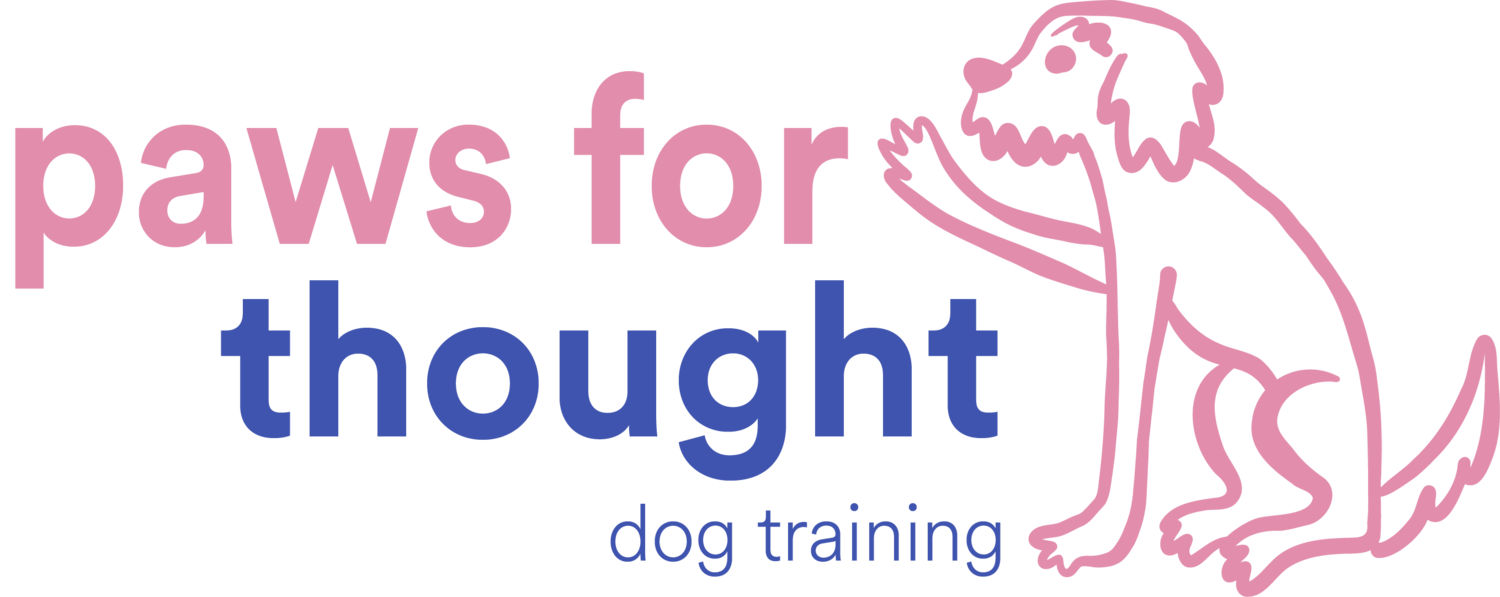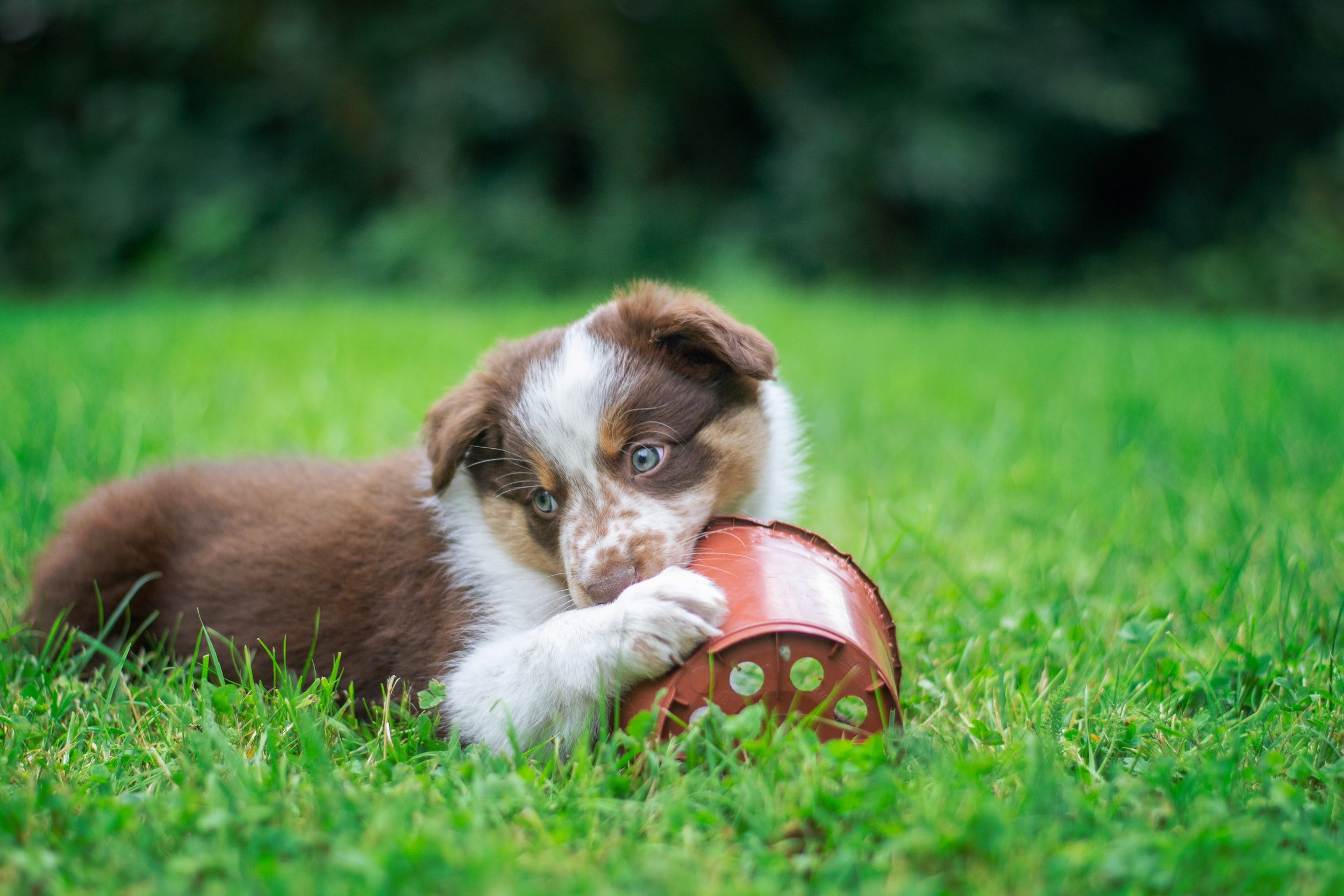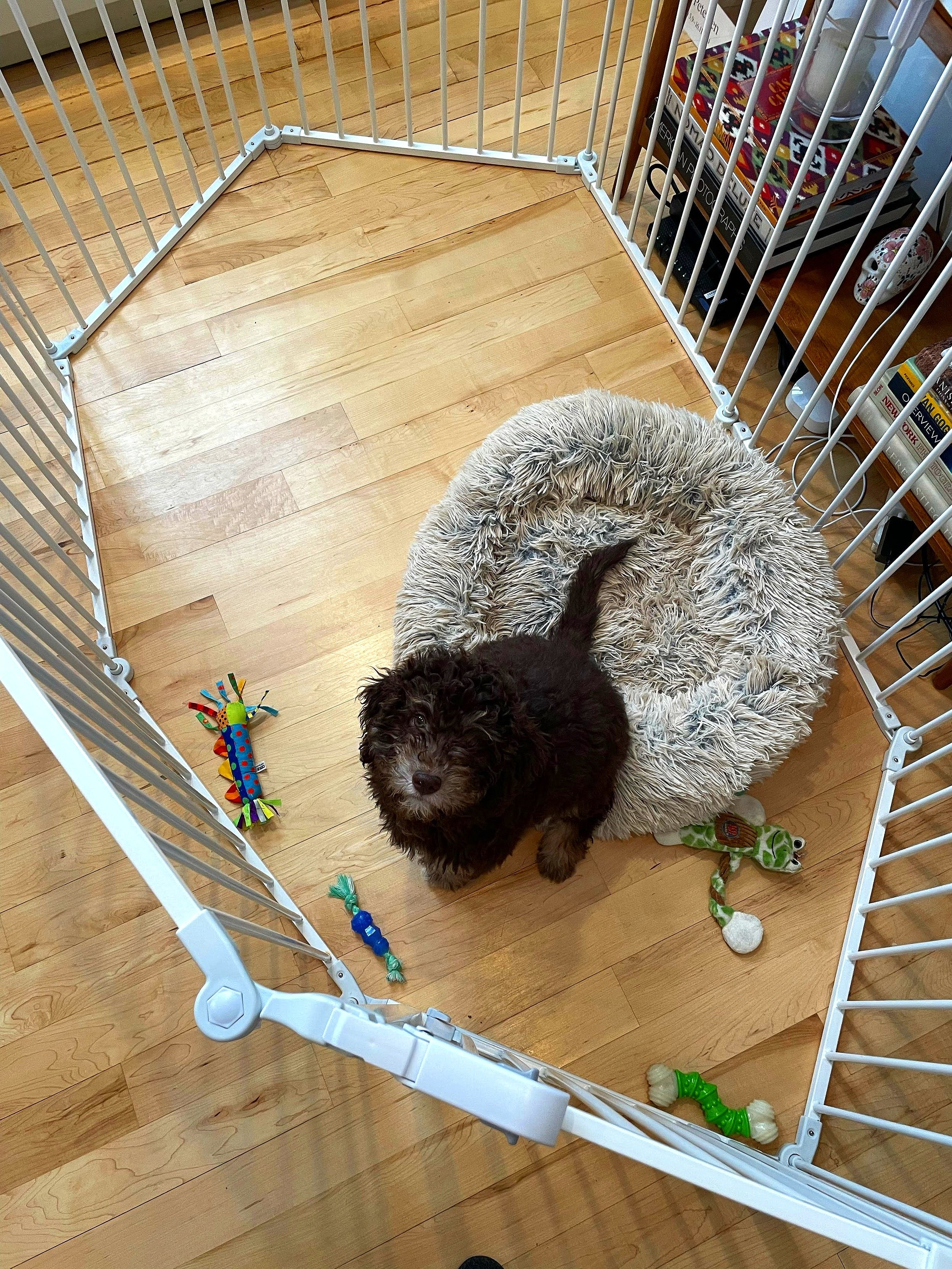Puppy Nipping: Living with a Furry Piranha
What Is Puppy Nipping?
Puppy nipping may look like teeth contact on or chewing of your extremities, clothing, or hair when accessible (during play, petting, or even when walking around the home together)
Mouthing or nipping in dogs is typical, and for the most part, related to the age of the dog. Mouthing is more likely in dogs under the age of 2 and less likely in dogs over the age of 2 (Waite et al., 2021).
Dogs tend to mouth the most during play or when overly excited. It’s also suggested that when puppies get tired or need to relieve themselves there can be an increase in nipping as well (Waite et al., 2021).
Some mouthing may be performed to serve a function. For example, a dog might nip to engage a human and receive attention from them (Waite et al., 2021).
If any of this sounds familiar to you, then you are dealing with regular old puppy nipping behaviors. Continue reading below to find out more about how to address them.
Is Your Puppy’s Mouthing Normal?
What Puppy Nipping is Not:
Growling or snapping at hands when approached.
Growling or snapping at hands when being picked up.
Growling or snapping at hands around mealtime or when enjoying a chew if approached.
Addressing Puppy Nipping
Puppy nipping is a normal, innate dog behavior. This means that it shouldn’t be punished through yelling, or physical corrections. However, we do need to manage the behavior and teach our puppies better ways of interacting with us because nipping hurts!
Redirecting
Always have a variety of soft toys, hard toys, and chews near you when you are interacting with your puppy. As much as possible you want to be directing their mouth onto these items rather than your hands or your clothing. Remember, the items themselves aren’t that exciting, YOU must make them fun by engaging your puppy with the toys.
Make sure to put away some toys when you are done using them. If your puppy has access to all of their toys all of the time, the toys will be less exciting. If you ROTATE the toys your puppy has access to they will be more interested in toys that are newly available.
Management
At the end of the day, your puppy will still want to mouth you. You smell good, you may even taste good, and your fingers/hands are a lovely texture and density for puppy teeth.
You need a safe option for moving your puppy away from your body or clothing, without having to put your hands on your puppy. This is called a drag leash, we like the Virchewly Indestructible Leash. You can use the leash to gently shift your puppy away from your body and engage them in a better activity than mouthing you.
Gates and pens are great ways to put space between yourself and your puppy. Especially during times when they may be overtired and are no longer able to be redirected onto appropriate toys or chews.
Meet Their Needs
Your puppy needs to have its physical and mental needs met in order to be in the best position for performing preferred behaviors (Hunt et al., 2022).
Enrichment opportunities that engage a puppy both physically and mentally are:
Sniffaris - exploring a new environment and giving them lots of time to sniff
Play with other dogs or puppies
Letting them engage in natural destruction (word) behaviors by letting them tear apart paper, cardboard, soft toys, etc.
Training and play with humans
If your puppy has had plenty of chances to engage in mental and physical activities throughout the day and you are starting to see an increase in mouthing and nipping, it might be time for a nap! Puppies need plenty of time to rest and recharge — on average they need even more sleep than adult dogs (Waite et al., 2021)! The best places for uninterrupted naptimes are behind a gate, or in a pen/crate.
Are you still feeling lost when it comes to addressing your puppy’s mouthing habits? Schedule a session with a certified trainer to discuss management and training techniques!
Hunt, R. L., Whiteside, H., & Prankel, S. (2022). Effects of Environmental Enrichment on Dog Behaviour: Pilot Study. Animals, 12(2), 141. https://doi.org/10.3390/ani12020141
Waite, M. R., Harman, M. J., & Kodak, T. (2021). Frequency and animal demographics of mouthing behavior in companion dogs in the United States. Learning and Motivation, 74, 101726. https://doi.org/10.1016/j.lmot.2021.101726




